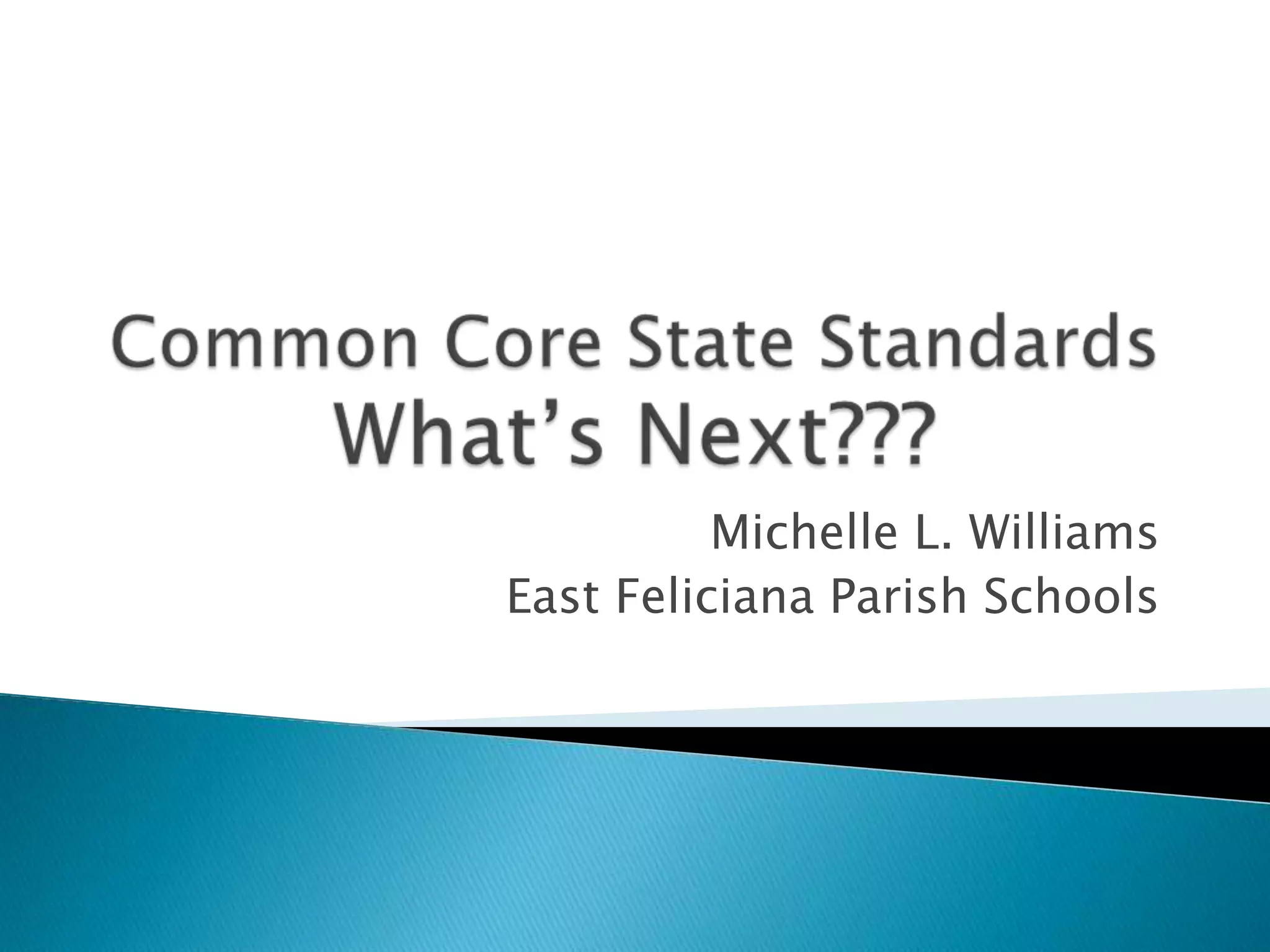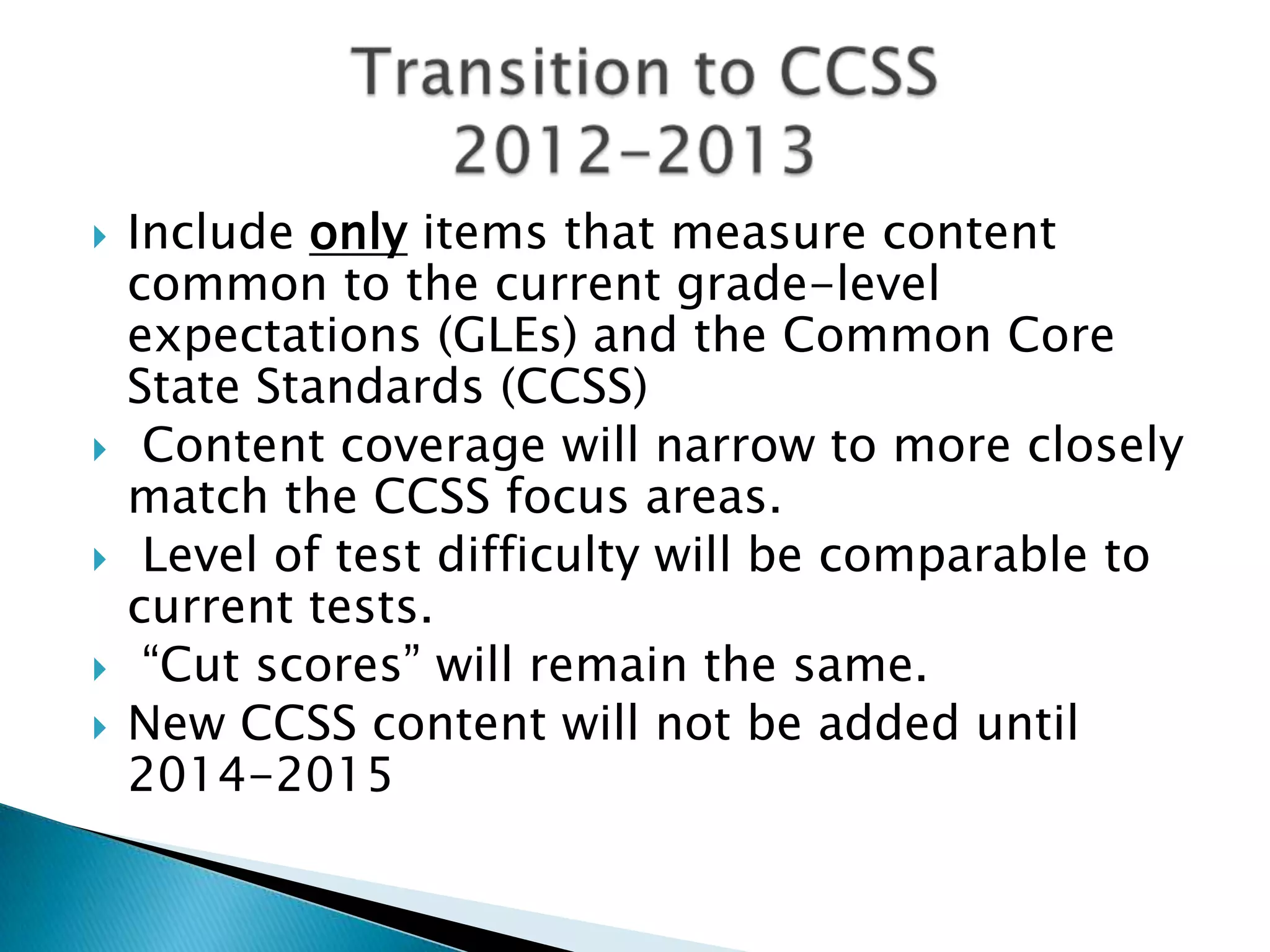The document discusses changes to Louisiana's standardized tests to better align with the Common Core State Standards. Key points include:
- Math tests will assess only content common to current standards and the CCSS, narrowing the focus areas.
- Some tests will no longer include the Iowa Test of Basic Skills. Grades 4 and 8 tests will be grade-specific rather than grade-span.
- Test difficulty and cut scores will remain the same during the transition period to the CCSS. New CCSS content will not be added until 2014-2015.
























